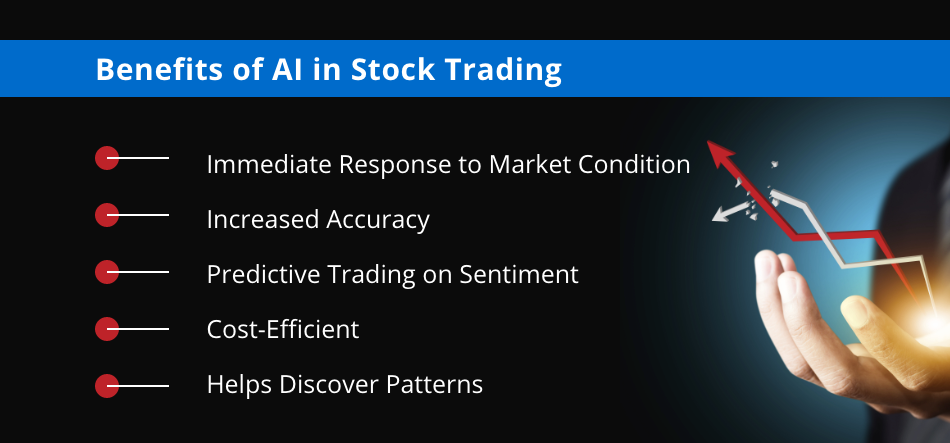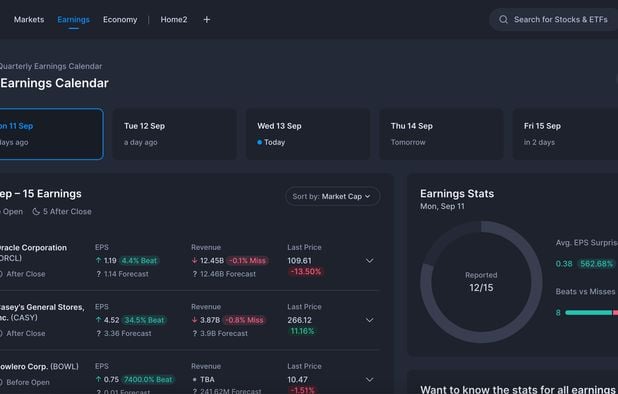20 Excellent Facts For Picking AI Stock Analysis Websites
20 Excellent Facts For Picking AI Stock Analysis Websites
Blog Article
Top 10 Tips To Customize Ai Trading Platforms To Your Strategy
Strategy customization is a crucial feature of AI platform for predicting and analyzing stocks, as it allows users to tailor the platform to meet their particular trading needs, risk tolerance, and market conditions. Platforms that offer a variety of options for customization can improve your trading. Here are the 10 best strategies for evaluating the customizable options offered by these platforms.
1. Evaluate Pre-Built Strategy Templates
Many templates. Check whether the platform offers a broad variety of pre-built strategies for various types of trading (e.g. day trading, swing trading or long-term investment).
Ease of use: Assess the ease of use required to apply and modify these templates to meet your requirements.
Performance history: Verify that the platform contains past performance data for pre-built strategic plans.
2. Create a custom strategy
Drag-and-drop tools: Select platforms with drag-and-drop interfaces that allow you to easily create customized strategies.
Look for options to code. For advanced users it is possible to verify if the service offers custom coding.
Flexibility: Ensure that the platform permits you to establish entry/exit rules and risk management guidelines, as well as other important elements of your strategy.
3. Check for Backtesting Capabilities
Historical data: Verify that the platform has enough historical data to backtest strategies.
A parameter that can be customized: Ensure that you are able to alter parameters while backtesting (e.g. indicators and timeframes).
Performance metrics: Ensure that the platform provides detailed metrics of performance (e.g. Win rate Sharpe Ratio, Drawdown) when backtesting strategies.
4. Evaluate Real-Time Strategy Testing
Paper trading: Make sure the platform provides models for paper trading or simulation to test strategies in real-time without the risk of losing capital.
Live testing - Make sure that you are able to test strategies using small amounts of money to see how they perform.
Real-time adjustments: Determine if it is possible to adjust strategies according to market conditions.
5. Assessment of Integration using Technical Indicators
Indicator Library: Check if the platform has a library of technical indicator (e.g. moving averages, RSI or MACD).
Custom indicators you should be able to create or import your own indicators that you can utilize in your strategies.
Verify the indicators' combination.
6. Check for Risk Management Tools
Stop-loss/take-profit: Ensure the platform allows you to set stop-loss and take-profit levels within your strategies.
Sizing your positions. Make sure you have established rules for how to manage your risk (e.g. the amount you set per portfolio, percentage).
Risk-reward Ratio: Verify that the platform is able to set individual risk-reward levels to trades and strategies.
7. Evaluate Multi-Asset Strategy Support
Asset classes: Make sure the platform supports strategies across various asset classes (e.g., ETFs, stocks, forex).
Cross-asset Strategies: Find out if it is possible to devise strategies that blend various asset classes.
Market coverage - Verify that the platform is covering the markets you're interested (e.g. US and international markets and copyright, etc.).
8. Review the automation and Execution
Automated trading: Ensure the platform supports automated execution of strategies that are based on predefined rules.
Types of orders: Determine if the platform supports various kinds of orders (e.g., market, limit, stop) for strategy execution.
Latency Check: Ensure that the platform permits trades to be executed with minimal latency. This is particularly important in the context of high-frequency strategy.
9. Look for tools to optimize your strategy.
Parameter optimization - Ensure that your platform comes with tools to optimize your strategy parameters.
Machine learning integration: Determine whether the platform is using machine learning for refinement and improvement of strategies.
Scenario analysis: Make sure that the platform can test strategies in different market conditions (e.g. volatile, volatile, bull or bear).
10. Review Community Feedback and User Feedback
User reviews: Study user feedback to gauge the platform's effectiveness for strategy and personalization.
Community forums: Find out if the platform has an active community where users share and discuss custom strategies.
Support resources: Ensure the platform provides tutorials, webinars, or other documentation that can help users design and implement strategies.
Bonus Tips
Trial period: Use the trial for free to test the strategy's customization capabilities.
Scalability: Ensure the platform is able to handle complex strategies that evolve as you trade.
Customer Support: Ensure that the platform offers support for any strategy-related concerns or questions.
These suggestions will allow you to assess the options for customization of AI trading platforms which predict/analyze the performance of stocks. So you can choose one that matches your objectives in trading and lets you improve and implement strategies. A platform with strong customization options allows you to adjust to changing market circumstances and improve the performance of your strategy. Follow the top rated continue reading about AI stock trading app for site info including trading with ai, ai investment app, ai for stock predictions, AI stock picker, best ai trading software, chart ai trading assistant, incite, market ai, chart ai trading assistant, incite and more.
Top 10 Tips To Evaluate The Transparency Of AI stock Predicting/Analyzing Trading Platforms
Transparency is a crucial element when it comes to evaluating AI-driven stocks prediction and trading platforms. Transparency allows users to verify the accuracy of predictions, believe in the platform, and comprehend how it works. These are the top 10 ways to gauge the level of transparency that these platforms offer.
1. Clear Explanation of AI Models
Tips: Ensure that the platform provides information on AI models and algorithms used to predict.
Why: By understanding the technology, users are able to assess its reliability and limits.
2. Disclosure of Data Source
TIP: Ensure that the platform reveals the sources of data it draws from.
The reason: Understanding the sources of data will ensure that the platform uses credible and comprehensive information.
3. Backtesting and Performance Metrics Results
Tips Look for reports that are transparent of performance metrics.
What is the reason? It allows users to verify historical performance and the effectiveness of their system.
4. Real-Time Updates and Notifications
Tip: Assess whether the platform is able to provide real-time updates as well as notifications regarding predictions, trades or system modifications.
What is the reason: Realtime transparency provides users with constant information about critical actions.
5. Limitations: Open Communication
Tips: Ensure that the platform is transparent about the potential risks and drawbacks of its trading strategies and forecasts.
What's the reason? Acknowledging limitations builds trust and helps you make better choices.
6. Raw Data to Users
Tip: Find out if you are able to access raw data or intermediate results that AI models utilize.
How do they do it? Users are able to do their own analysis and verify their predictions using raw data.
7. Transparency of Fees and Costs
Check that the platform clearly outlines all subscription fees and hidden charges.
The reason: Transparent pricing avoids unanticipated costs and increases trust.
8. Regularly scheduled reports and audits
Find out if the platform produces regular reports and goes through third party audits in order to confirm the effectiveness of its operation.
Independent verification is crucial because it enhances the credibility of the process and ensures accountability.
9. Predictions and Explainability
TIP: Determine if the platform explains how specific predictions or recommendations are made (e.g. important features or decision trees).
Why: Explainability helps users understand the logic behind AI-driven decisions.
10. Customer Feedback Channels, Support and User Feedback
TIP: Find out if the platform provides open channels to receive feedback from users as well as provide assistance. It is also important to determine if it addresses user concerns in a clear and transparent manner.
The reason is that responsive communication indicates the commitment to transparency as well as customer satisfaction.
Bonus Tip: Regulatory Compliance
Check that the platform conforms to financial regulations that are relevant and publicly discloses the conformity status. This provides an additional layer of credibility and transparency.
You can make educated decisions by weighing all of these factors. View the most popular ai tools for trading for blog examples including ai investment tools, invest ai, best ai trading platform, free ai tool for stock market india, how to use ai for stock trading, best ai penny stocks, trading ai tool, ai software stocks, chart ai trading, stocks ai and more.